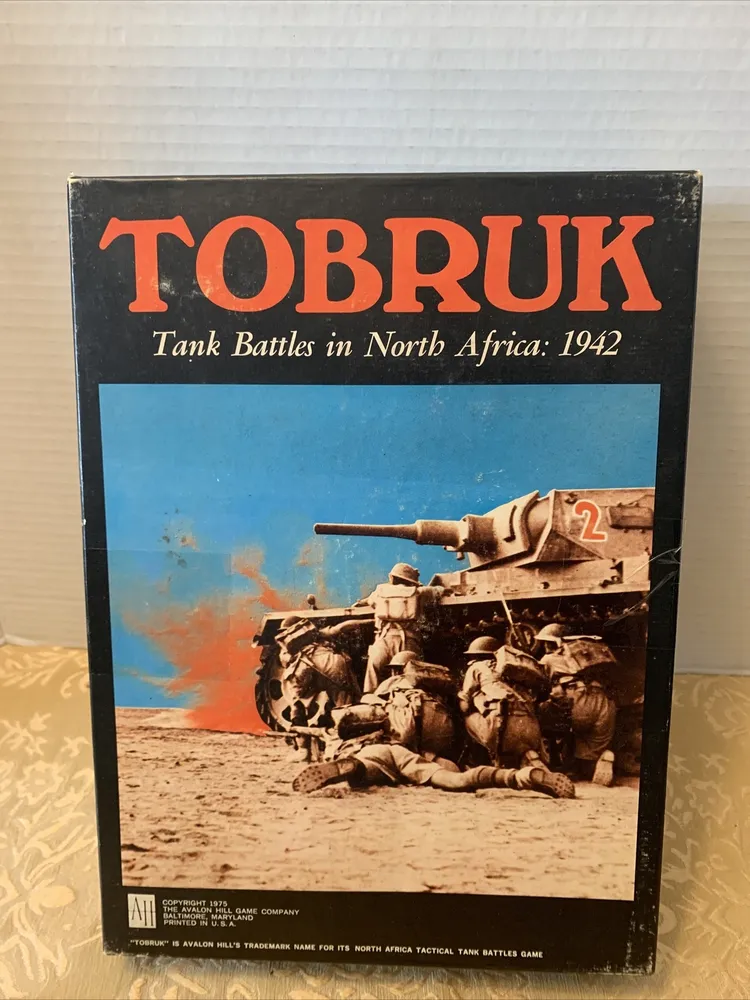Tobruk
Tobruk
Tobrukis a board wargame published by Avalon Hill in 1975 that simulates tank combat in North Africa during World War II. The game was designed by freelance game designer Harold Hock and developed by Avalon Hill staffer Randall Reed, who also provided the artwork. Tobruk is a two-player game in which one player controls German and Italian forces and the other player controls British and Allied forces. Although tank combat is paramount, infantry, artillery, and air superiority aspects of combat are present, albeit in secondary, reduced, or abstract form.
Why is Tobruk Popular?
Tobruk is significant because it was one of the earliest board wargames to simulate tank combat in North Africa during World War II. The game was well-received by critics and players alike, with some calling it the best of the new Tobruk games. Tobruk was also included in a 1976 poll conducted by Simulations Publications Inc. to determine the most popular board wargames in North America, where it placed 80th out of 202 games.
Game Components of Tobruk
How To Setup Tobruk
Setting up *Tobruk* involves arranging the hex grid maps according to the chosen scenario, placing the appropriate counters on the board, and preparing the necessary charts and player aids. The game includes nine scenarios, each with specific setup instructions to gradually introduce players to the game’s rules.
Gameplay Mechanics and Game Objective
Player Experience
*Tobruk* is known for its detailed and realistic gameplay, which can be both a strength and a weakness. The game introduces rules gradually through nine scenarios, making it a learning experience for new players. However, the extensive use of dice rolls and complex ballistics tables can make the game tedious and less exciting for some players.
Pros
Cons
Personal Thoughts on Tobruk
*Tobruk* is best suited for experienced wargamers who value historical accuracy and detailed gameplay mechanics. It may not appeal to newcomers or players seeking fast-paced action, as it requires patience and a willingness to navigate complex rules and tables. Despite its innovative approach and strong flavor of realism, the game’s tedium can be a significant drawback for many players.
We are supported by our audience. When you purchase through links on our site, we may earn an affiliate commission, at no extra cost for you. Learn more.

